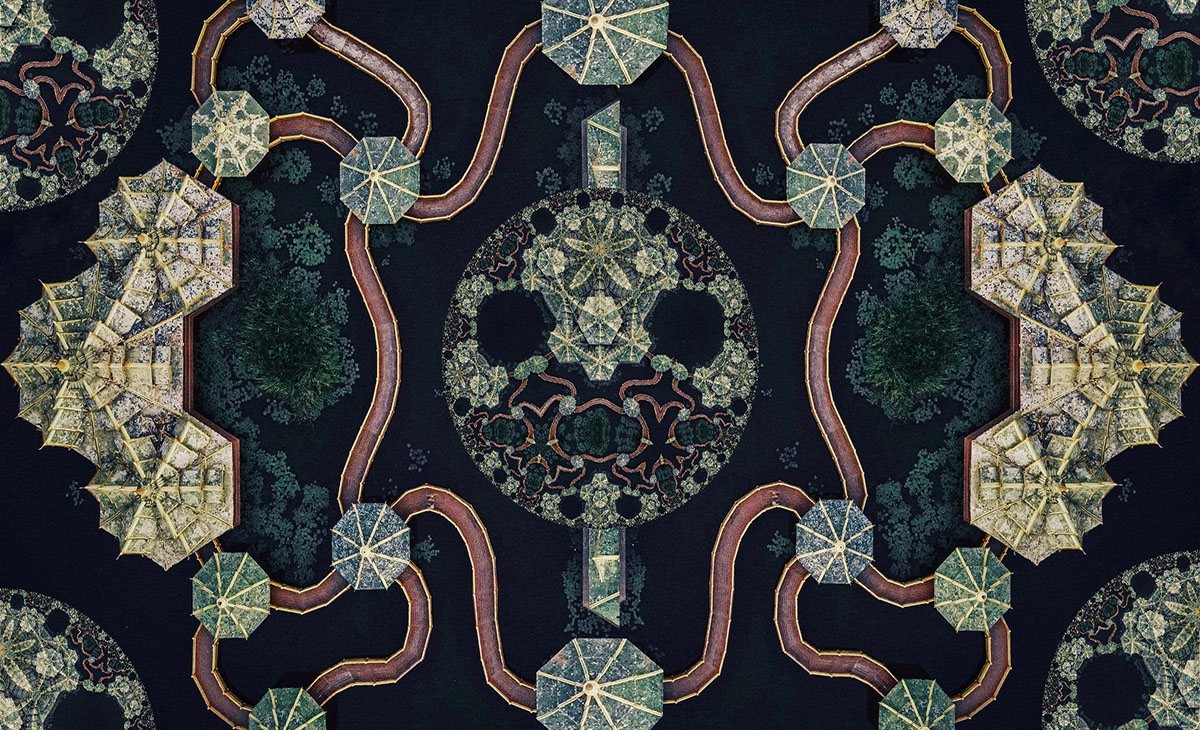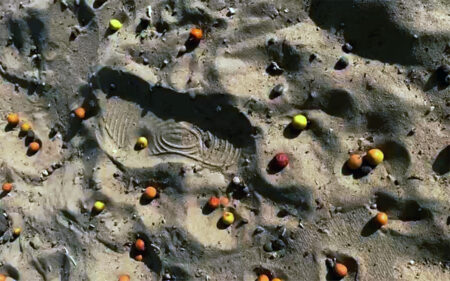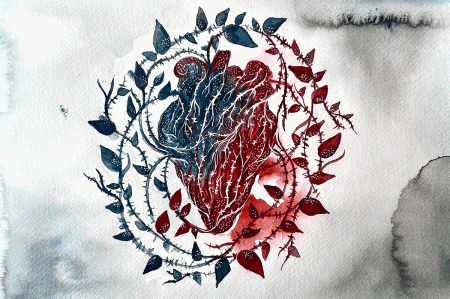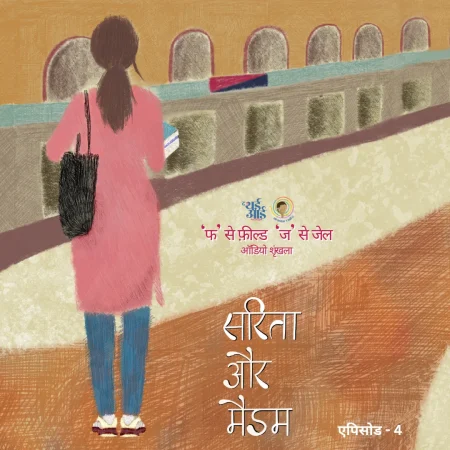Inventory of Losses
T talks about the day the mosque across her house offered namaz for three deaths together, an unprecedented event that shook up her entire mohalla.
S talks about her friend who lives down the lane, who is left orphaned after the recent passing of her mother. She talks about her own tears at having to witness her friend in such pain, because how is it possible not to cry?
V describes how the social life of her village has vanished, the warmth of encounters replaced by the mistrust that the other may be a carrier of a deadly disease. Many speaking after V add to the list of the silences that have fallen upon common areas of gathering – the playground, the hand pump, the dairy shop, the swings by the neem tree.
A reflects that she can’t think of a single house in her village that has been spared of pain during this time.
As I listen to The Third Eye digital educators from Uttar Pradesh, Rajasthan and Jharkhand, I wonder how we will ever find a vocabulary to work through these losses. What spaces will they be spoken in, who will come together to witness them, to hold each other and grieve together? What will it mean to heal from this?
A space for sharing
I’m in unchartered territory with this workshop, trying out online-friendly facilitation methods at the intersection of theatre, therapy and spiritual practice in the midst of the second wave. We hope to create a meaningful experience for the participants, and I attempt to find my own voice as a facilitator.
My brief is to facilitate an open space to talk about the ongoing second wave of Covid-19, a need identified after a previous meeting with the group revealed severely unarticulated anxiety. A part of me feels ill-equipped to do this session, and I remind myself that no one is adequately equipped right now. I put my trust in the act of trying, and we start our session.
During introductions, I try to find out where everyone is, especially whether they are alone in their space or not. In an ideal world, theatre is a medium for physically coming together and sharing space and energy, but failing this, having a space to explore oneself without gaze or judgement feels like a minimum requirement. Yet, I’m aware that this requirement is also likely difficult for the participants, since they are logging in from homes in rural and semi-urban settings, where privacy is not a given.
A theatre workshop needs three key ingredients: using the body, using our imagination, and a little playfulness. To activate the body, we shake up and do a body warm-up and then some breathing exercises. Following this, I lead them through a 20-minute guided body scan meditation that invites the participants to lie down, focus on the breath, and follow an imaginary flame travel across the body, starting at the sole of the foot, finding its way to the head, and finally arriving at the heart. For the purpose of this workshop, such an exercise allows participants to get in touch with one’s body, activate their imagination and become present in the group.
The participants respond positively to the scan and many of them are eager to share their experience of feeling lighter [“Shareer halka lag raha hai”], and experience of different parts of their body in this way, a first for many of them. “At first I couldn’t see anything, but when the light came to the heart, it suddenly illuminated the whole body, and I felt like I saw myself from within for the first time,” S, from Jharkhand, shares. “When the light got to the brain, it felt like all the darkness disappeared in that moment,” adds B from Uttar Pradesh. I can tell it has been a powerful experience and I curse myself for having to cut the sharing short, but I have more exercises to cover and must move forward.
Maps of pain
At a time when we’re overwhelmed by information, having a framework upon which to lay out the chaos of our minds can provide a useful entry point.
The physicality of immediate surroundings and the way that the body interacts with them is also an important anchor for our next exercise.
As a theatre practitioner, the body is a primary site to make sense of the world. Currently our bodies, like sponges, are absorbing everything that we can’t process mentally and emotionally. As a result, pain often erupts in different parts for seemingly inexplicable reasons. I want to connect the pain we feel in our bodies, to the pain outside of us. The body scan meditation helped create a kind of map, and gives directions to enter into one’s own body, and now it’s time to turn the gaze outside.
On a piece of paper, I ask participants to draw a map of their mohalla, or street or village, and to mark dots wherever they feel that there is pain being experienced, at this present moment. I specify that pain can be of any kind, and may or may not be related to Covid, illness, death, or violence as karyakartas are often familiar with through their casework.
Many participants are keen to share their maps. Some express pain easily, and others hide behind descriptive details of streets and its inhabitants. As a facilitator, I witness their recognition of grief, and thank them for sharing, with the trust that speaking and listening is doing its job and maybe for now, acknowledging pain is enough.
(Watch what happened when this pedagogy was applied with our digital educators in the video Cartographies of Grief here)
Pandemic, pain and numbness
Pain is our body’s security radar. It alerts us to threat and sets survival mechanisms in motion. By design, we are wired to avoid pain, not just because it’s an unpleasant feeling, but also because the quick actions we take to avoid pain are meant to prevent further harm — like the instinctive pulling away when we touch something too hot. Fight or flight; survive first and reason later.
Our immediate reactions to pain are often pure instinct, unfiltered by the rational mind. The non-rational mind, however, is a goldmine of mysteries, and sometimes makes us act in ways that refuse to make ‘sense’. Not all instincts work with clarity towards a desirable intention. For instance, a third common response to pain is that we freeze. Unlike fight or flight, freezing is a threat to survival because it suggests an inability to act, move, or even feel. The nervous system, responsible for communicating important messages about our survival, goes silent.
The dangers of numbness are best mirrored in another feared and contagious disease – leprosy. For a long time, the disintegration of limbs in leprosy patients was thought to be caused by the bacteria, and hence an unavoidable result of the disease. Dr Paul Brand, a missionary doctor, disproved this by showing that the bacterium attacks the nervous system, causing numbness and leading to zero warning of pain. Lacking this basic defence mechanism, leprosy patients end up causing harm to their own limbs unknowingly. What starts with numbness ends with a disintegrating body that is no longer able to care for itself, and thus vulnerable to continuous harm.
This is true as much for the physical body as for the emotional body and the body politic. Trauma does to our minds and psyches what the leprosy bacterium does to the nervous system. It numbs us. First coined by psychiatrist Robert Jay Lifton while studying the cumulative impact of the Hiroshima bombing on the community, the term ‘psychic numbing’ refers to the way that a culture or society withdraws from issues that would otherwise be too overwhelming for the human mind to comprehend.
Politics of pain
As the surge of Covid cases wreaked havoc in our lives, a conversation around ‘positivity’ mushroomed around us. The media and propaganda machinery picked up on it, as a way to silence or distract away from the pain. This, along with the gross underreporting of numbers of Covid cases and deaths, ensured that the pain of tens of thousands of people could be hidden away from public eye.
The tendency to look away from pain or vilify those speaking about it is not new. In fact, the very foundations of the neoliberal, Brahminical, patriarchal order are laid on undermining and ignoring pain – not only of those who are oppressed within the system, but also those who are complicit in varying degrees.
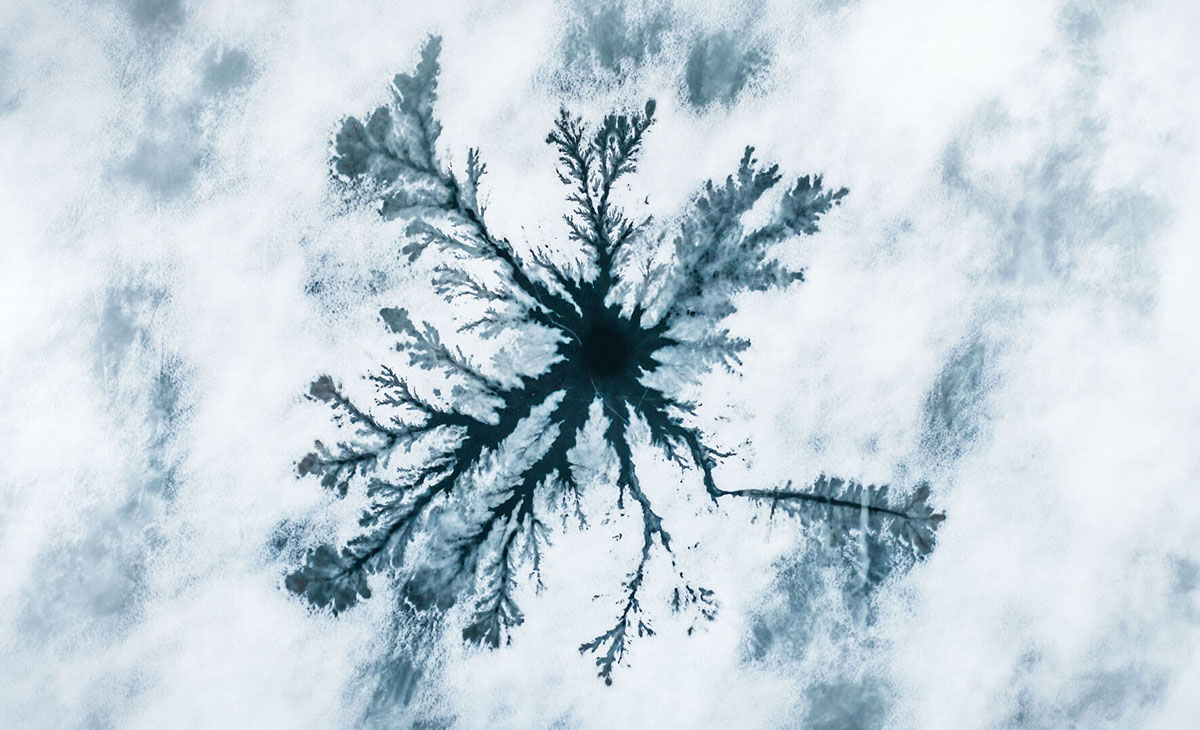
We know the usual reactions to articulating pain from our everyday lives. We may be told, or may tell someone to toughen up, become resilient, just deal with it, to not make such a fuss about it, or myriad other responses that seek to undermine the pain rather than acknowledge it and make any necessary changes in our immediate lives to prevent or heal from the pain. Often, this is also how we treat our own bodies when it tells us it is in pain. By silencing our own vulnerability, by distracting ourselves with control, consumption, detachment, outrage, revulsion, indignation, piety, or narcissism, we may go down a vortex of pain and harm without realising it.
However, when pain is clearly and fearlessly articulated, its truth has the capacity to penetrate through the “all is well” narratives of deception. This is why learning to articulate and acknowledge our pain, first of all to our own selves, and then to others we feel community with, as well as learning to bear witness to each other’s pain, and receive each other in care at such moments is a political act and an important part of feminist praxis.
The maps of pain are as much a tool to chisel away at this feeling of being overwhelmed, as well as a way to bear witness to the sufferings of this time and build a collective memory around it. It helps draw attention to the immediateness of our physicality. The act of drawing the map grounds us, and breaks through automatic numbness that may set in to help our brain avoid constant vulnerability of uncertainty.
Thawing our bones
We are all at least a little bit numb, or have found ourselves frozen at different moments in the past year. It is the only human response to the extent of the losses we have suffered. There are as many ways to recover an aliveness as there are people. Our own survival instinct will pave unique paths, if we let it, to ways of grieving, coping, and keeping ourselves alive not only physically but also emotionally and spiritually. The question for us, then, is to identify the blocks within ourselves to help the body do what it knows how to.
For instance, when participants shared their body maps, many of them had dots of pain in their heads and hearts, and articulated how they, and we all, are affected by what we are witnessing. The pain of seeing a loved one in pain, the pain of being unable to be with a loved one during their moment of pain, the pain of imagining the pain of infinite others whose lives we are not immediately touched by, are all enlisted in the inventories of the pain of this time. To allow these articulations is essential to individual wellbeing, and for building a vision of collective healthcare.
In The Faraway Nearby, essayist Rebecca Solnit writes, “If pain defines the boundaries of the body, you participate in the social body with those you empathise with, whose pain pains you – and whose joy is also contagious.” The spontaneous coming together of mutual aid groups that mobilised resources has been a prime example of this force of empathy in action.
The role of the collective in fighting numbness, the powerful force of collective empathy, connection and interdependency, has proven to be one of the greatest lessons of the second wave.
The workshop provided a similar space, to be able to articulate and express what cannot be acted upon. In a followup workshop, participants were asked to think of what they would like to give a loved one who needs them right now: the responses varied from gifting trees to spending time, to just being able to celebrate togetherness.
At the end of these sessions, we were left with the feeling that our possibilities for building connections are infinite, and they begin within us.
Workshop
I. Body scan
To create space for the body involves allowing accumulated pains and blocks to reveal themselves to us. A simple body scan meditation, which is meditative and calming, can also allow us to notice parts of our body that otherwise go unnoticed. What are the body parts where we are able to allow light to travel easily? Where is the light unable to go? What sensations do we feel in each part of the body as we scan it with our inner eye? Each of these questions opens the door to the exploration of our body, and the traumas we carry within us.
II. Map of pain
Starting from the self, or a point that says “I am here”, start drawing a map of the space around you. In the session above we had done a map of the neighbourhood, but such a map could be more intimate, such as a map of the house or even a room, or bigger, such as a map of the town. Each of these would likely lead to different kinds of reflections.
If the exercise is being done with a group of people who all belong to one town or region, it can also be a collective one to identify spots where pain exists within the town and open up a discussion on the spots that are identified by different participants.
When asked to plan a similar workshop for urban activists, I realised that a peculiar condition of urban dwellers and residents of digital worlds is that often we don’t know what is going on in our physical neighbourhood. Our interaction with multiple sources of pain involve the same physical activity – i.e., facing a screen. It is a challenge to figure out how to externalise the networks of pain. A possible way out is to make a map of ties with important people, sources of information, apps and other activities that consume our day and can sometimes be sources of pain.
III. Body map of pain
To draw a map of pain on the body, take an outline of the human body and ask participants to mark with dots all the areas where they are currently experiencing pain. Referring back to the body scan can help participants rely on their connection with their body and articulate what they felt during the exercise.
The map is meant to help articulate and visualise pain that we feel, outside of our heads, and to be able to look at it with a distance. Just acknowledging it can be a step in the right direction if we have a tendency to undermine pain by saying, “Yeah, I’m fine!”
IV. Journaling/ free flow association
Each of these activities can be done in a group or individually. In a group, it may help to speak about the reflections of the exercise, but in the absence of a group to share with, or if one encounters reflections that are too personal to share with the group, sitting with a notebook (or a phone) and allowing yourself to write (or record yourself speaking) about the exercises can be a very helpful tool in making sense of these explorations.
You could give yourself prompts such as – “this part of my body is in pain because…” and allow all the different associations to flow out freely. They may not immediately make sense, or even be rational, but allowing yourself to voice them without judgement will be your first step into observing and understanding what you feel about the part of your body that is in pain. It is important to allow yourself to be surprised by what comes out, as though the person speaking or writing is not you but someone else, and not control your thoughts into giving what you feel might be the “right” answer.
Note to facilitators
These are not one-time exercises. Each time such spaces are created, something new may emerge, or you and the group may go deeper in the direction of articulating and understanding your own pains. Trust your own curiosity to guide you towards the right questions to ask for a deeper exploration.
Keep in mind that these exercises cannot be used in lieu of medical help if you’re experiencing acute pain and symptoms. Getting medical help whenever possible is exactly what listening to pain and preventing further harm means. Such an exploration is only possible without the threat of immediate harm to the body.
When facilitating such sessions with a group, there could be a situation of voicing of deep and difficult pain and trauma that you as a facilitator may not be immediately equipped to handle. In such a situation, it is important to allow the person to articulate themselves, and acknowledge their pain, and ask them if they would like to seek additional help in coping with their pain, if such help can be made available. Recognising that such help may not always be accessible, it is important at the very least, to allow the participant to feel witnessed and heard and to let them know that they are cared for. At a time when we have no easy solutions to such situations, we have to be able to take the first step in the faith that that much will be enough, and that voicing the pain may have set in motion the participant’s own journey that we may not see to completion, but that’s okay.


